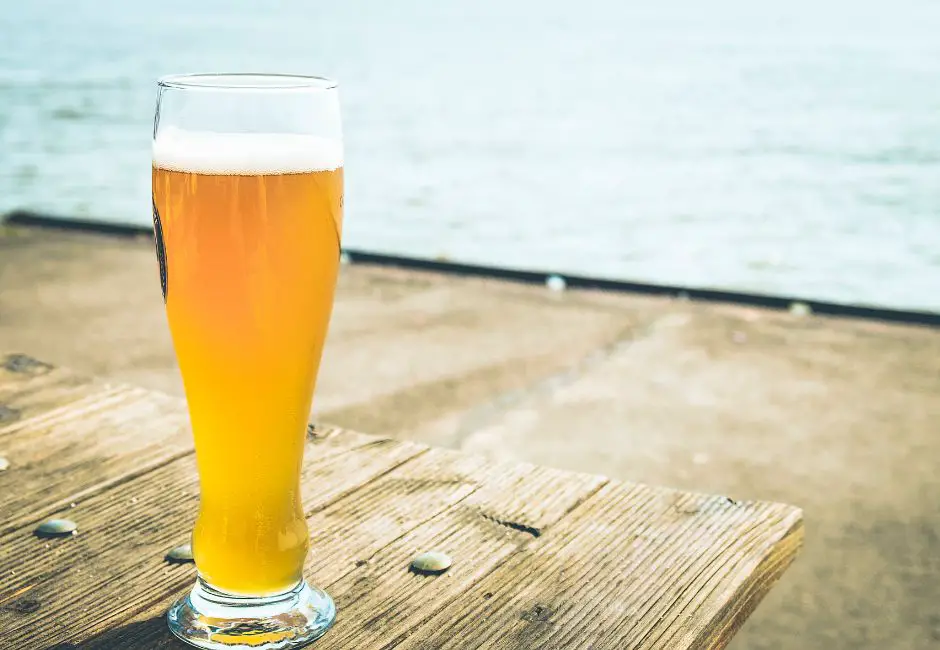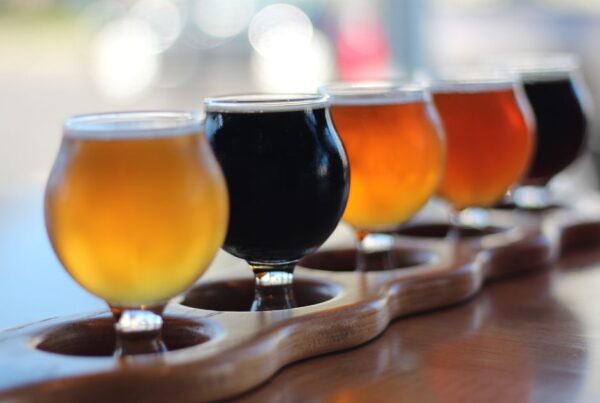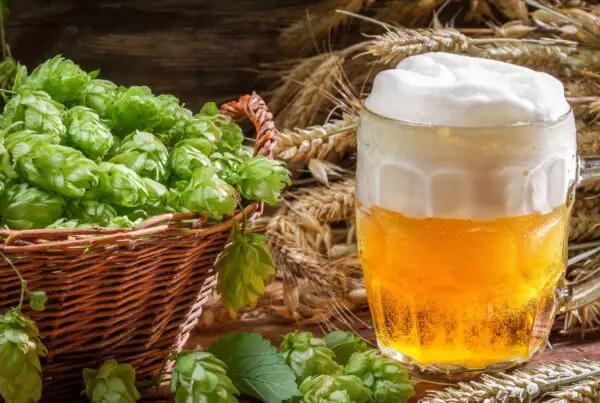What Makes a Beer a Pilsner?
It’s safe to say that most of us have tasted a beer or two that didn’t quite hit the mark for us. Well, the folks in the area now recognized as Pilsen, Czech Republic, experienced this same dissatisfaction back in 1839.
Unhappy with their subpar ales, the people of Pilsen took matters into their own hands, and in a daring move, paved the way for the inception of the world’s first Pilsner beer.
Today, we’re going to take a quick journey into the history, unique characteristics, and worldwide influence of the almighty Pilsner. Let’s Czech it out:
The Pilsen Beer Party
In 1839, the citizens of Pilsen somehow got a hold of 36 barrels of ales and lagers from local breweries. But rather than simply taking one down and passing it around, they decided to dump them all out into the old-timey cobblestone streets—deeming them “undrinkable.” (Clearly they had yet to try Bud Light Chelada.)
This dramatic event caught the eye of Bavarian brewmaster Josef Groll. By blending the uniquely soft water of Pilsen, the recently discovered Saaz hops, local Moravian barley, and Bavarian lager yeast, Groll crafted the inaugural Pilsner—marking the birth of a timeless classic.
Anatomy of a Pilsner Beer
The result of Groll’s efforts was the iconic Pilsner Urquell, a pale lager that has since captivated and delighted beer enthusiasts around the world.
Its name—which appropriately translates to “the original source at Pilsen”—is a testament to its status as the archetype of the Pilsner style. Boasting a beautiful, clear golden color, the Pilsner’s appearance is as inviting and refreshing as its taste.
A true Pilsner is a harmonious blend of four key elements:
- Water: Pilsen’s water is famously low in mineral content—which allows the delicate flavors of the beer to shine through, without being overshadowed by stage hogs like magnesium sulfate.
- Malt: The Moravian barley provides a delicate, cracker-like malt backbone to the beer, imparting a subtle sweetness that balances the bitterness of the hops.
- Hops: Saaz hops, a variety from the Czech Republic, lend some unexpected earthy, spicy, and floral aromas to Pilsner beer, providing it with its signature crisp, refreshing “bite.”
- Yeast: Lager yeast ferments at lower temperatures and imparts fewer fruity esters than ale yeast, allowing for a clean, crisp, and clear taste profile.
Sub-Types of Pilsner
The success of the original Czech Pilsner Urquell in the 19th century inspired breweries around the world to come up with their own “sub-varieties”:
- German Pilsners, sometimes called Pils, are more well-known than the original Czech Pilsner. They’re slightly more bitter and have a more pronounced hop flavor than their Czech counterparts.
- Belgian Pilsners are similar to the German Pils, but are usually slightly sweeter. They’re also very light and very smooth compared to other varieties.
- American Pilsners (also called American Pale Lagers) were originally brewed by German immigrants, using European recipes that were adapted to use corn and North American hops. Today, they can vary significantly, ranging from traditional interpretations to craft-brewed creations with bold hop profiles, including American Imperial Pilsners (AKA American Double Pilsners).
The Pillars of Pilsners (Tips for Enjoying the Perfect Pint)
To appreciate the beauty of a Pilsner, follow these simple tips:
- The Glass Matters: Choose a tall, slender Pilsner glass that tapers towards the top, which not only showcases the beer’s clarity and golden hue, but also helps maintain its foamy head.
- Temperature is Key: Pilsners are best enjoyed at around 40 – 45°F—cold enough to be refreshing, but not so cold that it masks the nuances of the flavor.
- Freshness Counts: Due to its delicate nature, Pilsners should be consumed fresh. Make sure to check the packaging or bottling date when buying.
The Pilsner’s Enduring Legacy
What began as a bunch of people dumping beer in the streets in a (then) small Czech town has now spread worldwide—becoming one of the most popular beer styles. And as we raise our glasses to the remarkable journey of the Pilsner, we celebrate not just “a beer”—but the relentless pursuit of brewing perfection as well.
From your classic Czech Pilsner, to innovative craft brews like the American Imperial Pilsner, the Pilsner remains a testament to simplicity, quality ingredients, and the art of brewing.






